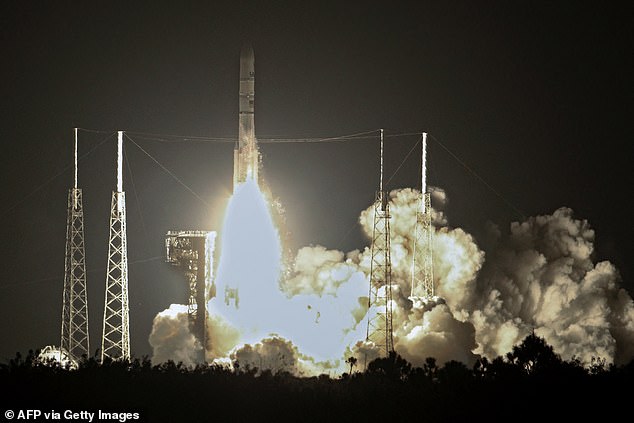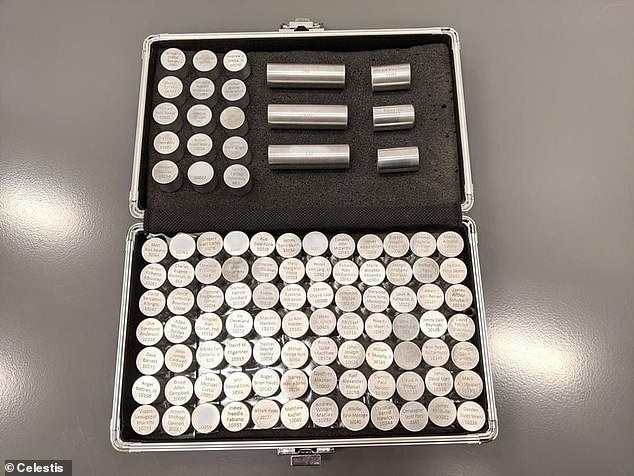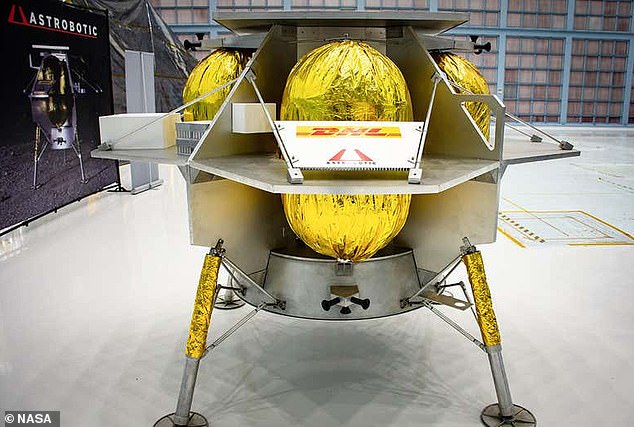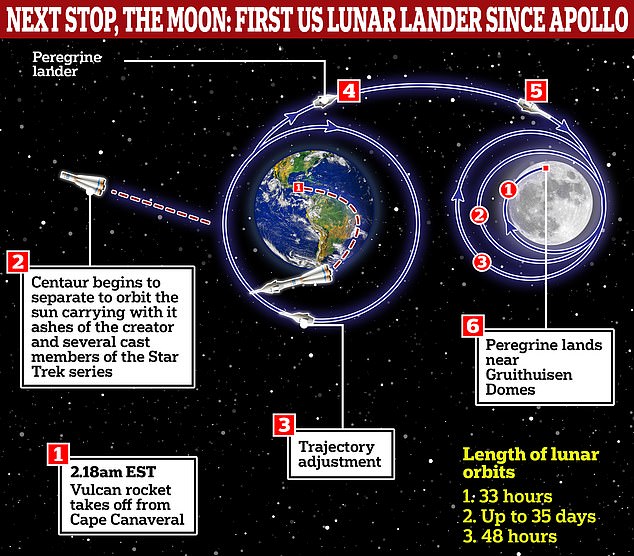Peregrine mission One lunar lander carrying JFK's DNA undergoes an 'anomaly' while heading to the moon
A lunar lander launched from Florida this morning to return human remains to the moon has encountered an 'anomaly'.
The 1.2-ton lander carries $108 million worth of NASA instruments, a hair sample from US President John F Kennedy and the ashes of hundreds of other people.
Pittsburg-based Astrobotic announced that the Peregrine One lunar lander has not pointed itself toward the sun, hindering its ability to charge using solar panels.
The lunar lander launched Monday at 2:18 a.m. ET from Cape Canaveral atop a brand new Vulcan rocket built by United Launch Alliance.
The separation was successful, but the problem was discovered when the lander entered the expected safe operational state approximately seven hours after launch.
Astrobotic said engineers were working on the issue and will provide updates when there is more information.

The lunar lander is on an Astrobotic Technology spacecraft, which was launched atop a brand new Vulcan rocket built by United Launch Alliance
The spacecraft holds the remains of people whose families paid up to $13,000 to scatter them across the moon.
A hair sample from John F Kennedy is on board, along with samples from Dwight D Eisenhower and George Washington.
The mission was organized by Celestis, a company that specializes in taking cremated remains and DNA samples to space and offers lunar burial packages starting at $2,500.
Each sample was placed in a silver cylinder before being loaded into the spacecraft, which would then land on the moon's surface.
Peregrine One launched Monday atop a brand new Vulcan rocket built by United Launch Alliance.
Astrobotic noted that the lunar lander and the Vulcan rocket were successfully separated, with the lander receiving telemetry through the NASA Deep Space Network.


The 1.2-ton lander carries $108 million worth of NASA instruments, a hair sample from US President John F Kennedy and the ashes (pictured) of hundreds of other people


A hair sample of John F Kennedy is on board, along with Dwight D Eisenhower and George Washington, for a mission organized by Celestis
“Astrobotic-built electronic systems, including the primary command and data processing unit, as well as the thermal, propulsion and power controllers, are all powered up and performing as expected,” Astrobotic shared.
Peregrine then entered a safe operational state as expected, but then the anomaly was discovered.
“Following the successful activation of the propulsion systems, Peregrine entered a safe operational condition,” Astrobotic shared in a statement.
'Unfortunately, an anomaly then occurred, preventing Astrobotic from achieving a stable, sun-facing orientation.
“The team is responding in real time as the situation unfolds and will provide updates as more data is acquired and analyzed.”


The Peregrine One Mission carries the DNA and ashes of approximately 60 people, including three Star Trek actors and US President John F Kennedy
The Vulcan Centaur rocket launched at 2:18 a.m. EST from Cape Canaveral Space Force Station Florida and is part of the first in a series of missions for 2024 under NASA's Commercial Lunar Payload Services program.
At launch, the rocket used two methane engines and two boosters to produce one million pounds of thrust.
Within minutes of ignition, the rocket burned 701,000 pounds (318,000 kg) of fuel and reached half its original weight.
The 'payload fairing', which was used to protect the rocket against the extreme forces of the launch, was then jettisoned.
This left the rocket at less than 10 percent of its original weight.


After adjusting its trajectory in Earth's orbit, the Peregrine lander will begin its long journey to the moon for its lunar orbit phase before attempting a landing in February.
The Vulcan rocket then entered orbit and spent 28 minutes coasting.
Then, 51 minutes and six seconds after launch, the lander separated from the rocket, readying it for its long journey to the moon.
But then came the unexpected problem.
The lander must position its solar panels toward the sun to charge its batteries for the rest of the journey to the moon's surface.
If the team is successful in modifying the spacecraft, the lander is expected to land on the moon in February.
